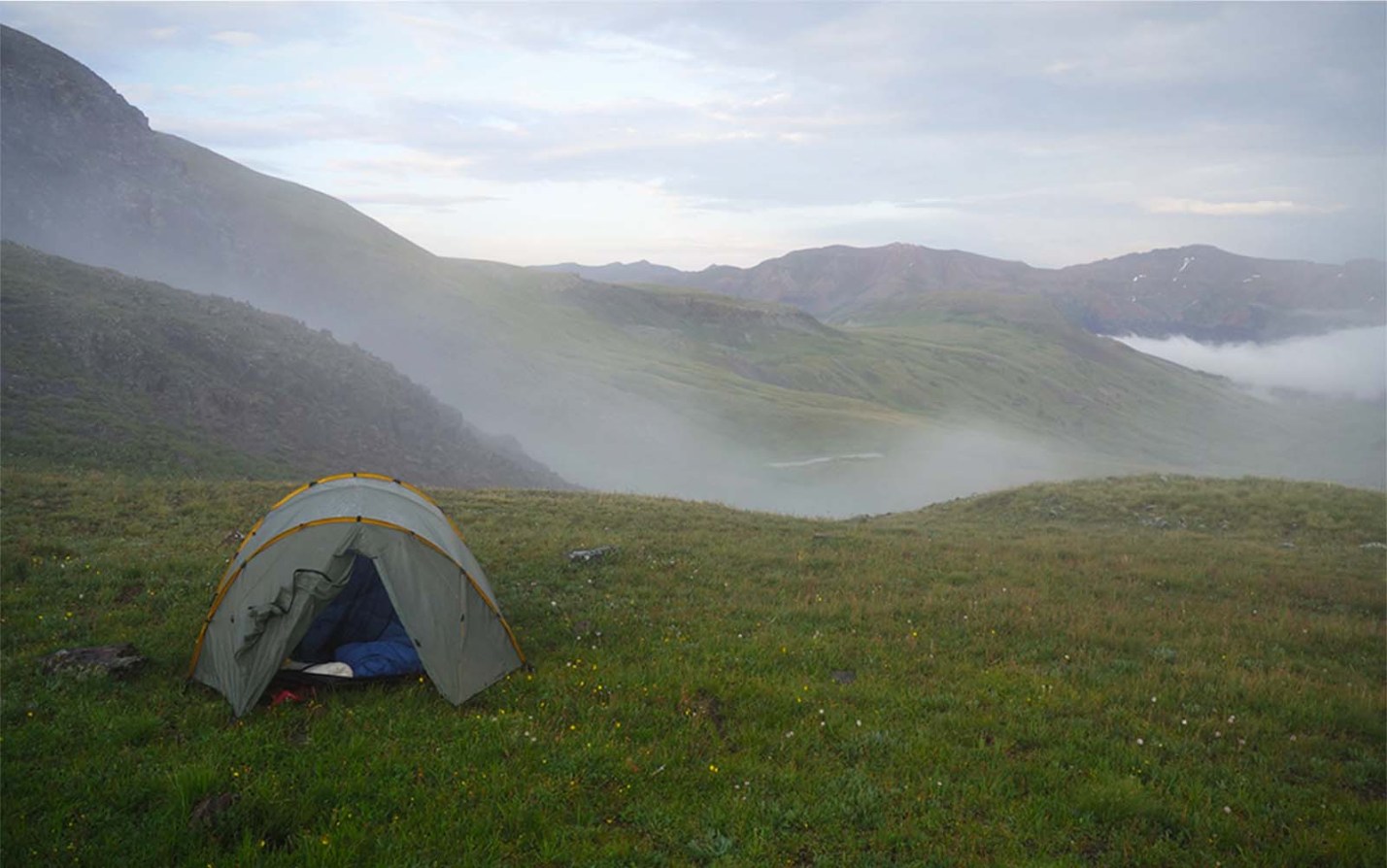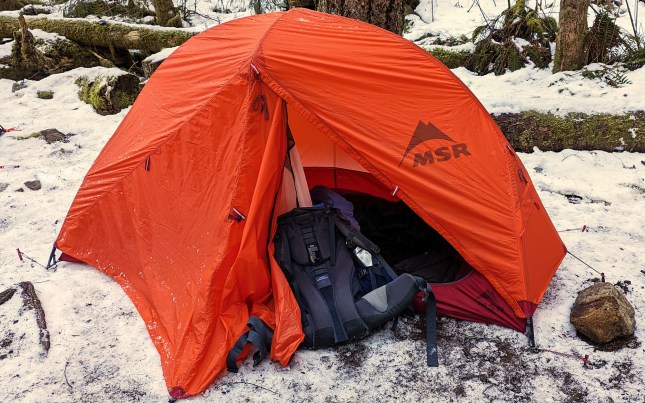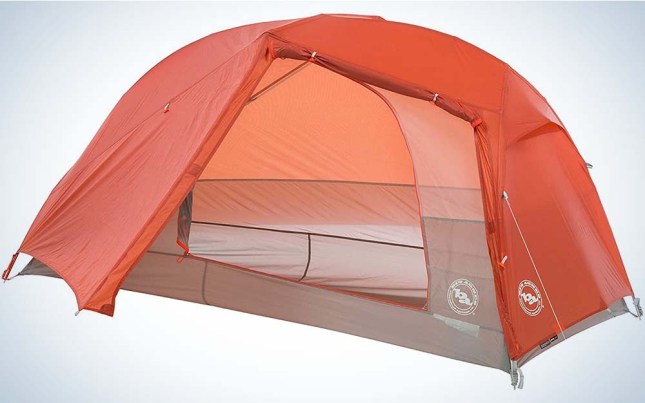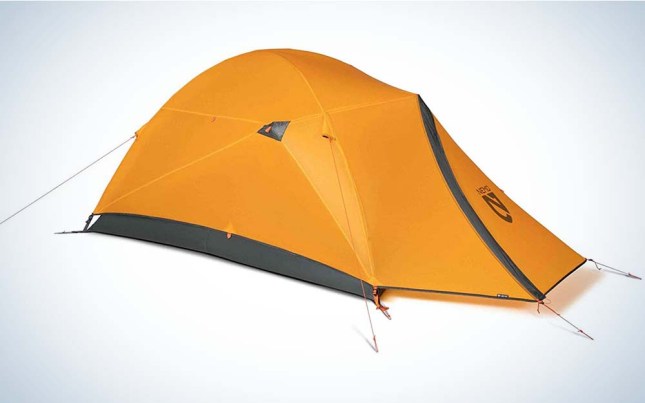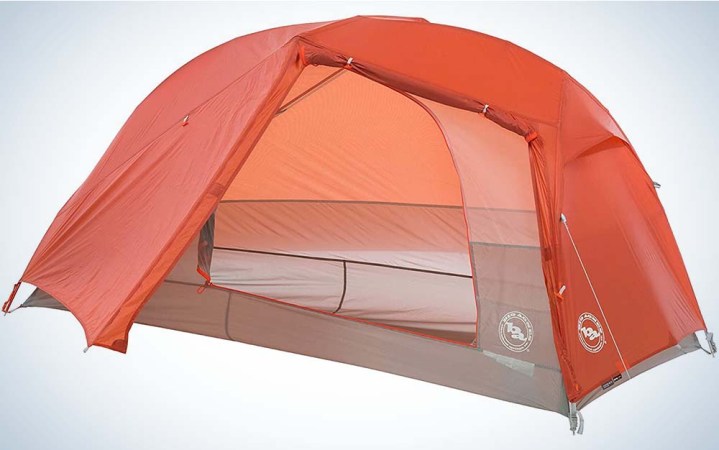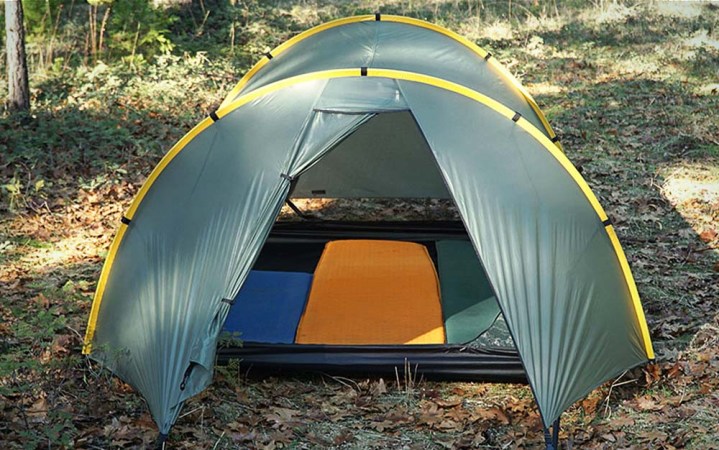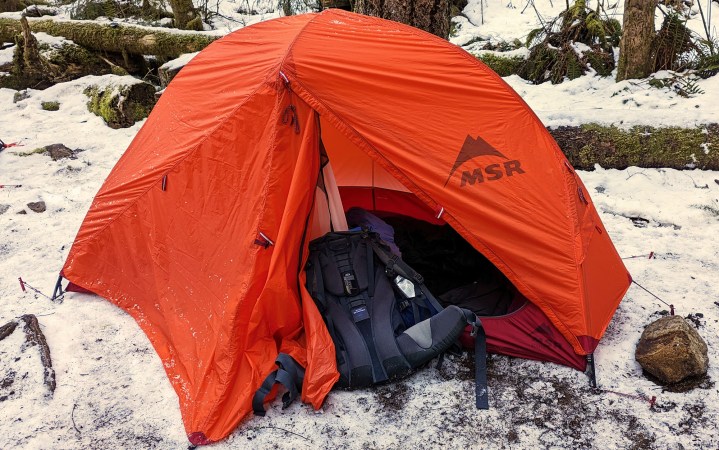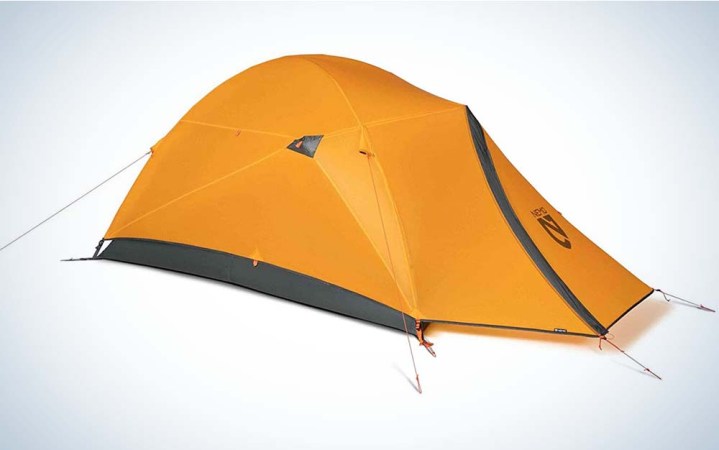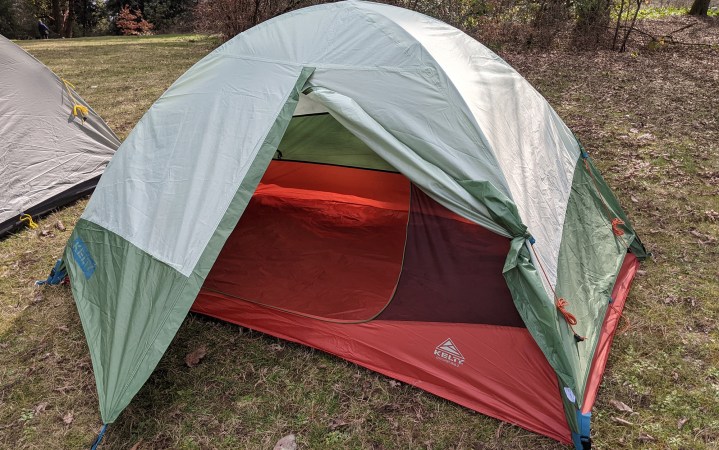We may earn revenue from the products available on this page and participate in affiliate programs. Learn More ›
Protecting yourself—and your gear—from the elements is core to the backpacking experience. That starts with choosing the best backpacking tent for your needs. From mosquitoes, to downpours, to surprise summer snow and windstorms, finding a tent that you can sleep soundly in is pivotal. Our picks are some of the best backpacking tents on the market today. They are engineered to protect you from the elements with only a few pounds of nylon and aluminum.
- Best 2-Person: Big Agnes Copper Spur HV UL2
- Best 3-Person: Tarptent Cloudburst 3
- Best for Winter: MSR Access 2
- Most Versatile: NEMO Kunai 3–4 Season Backpacking Tent
- Best Budget: Kelty Discovery Trail
How I Picked the Best Backpacking Tents
I’ve tried, and watched others try, numerous backpacking tents over hundreds of nights during the last decade in nine different states, covering everything from alpine meadows to old-growth forests. I’ve had my fair share of mishaps in tents. I once was flooded out in Southern California as well as blown off a sand dune outside of Death Valley. I’ve also brought the wrong poles for my winter tent during a snowshoeing overnight in Olympic National Park. The picks in this article are the ones that I would recommend to anyone looking to make a first-time backpacking tent purchase, as they are a great balance between price, weight, and in-the-field functionality.
Best Backpacking Tents: Reviews & Recommendations
Best 2-Person: Big Agnes Copper Spur HV UL2
Key Features
- Weight: 2 pounds, 11 ounces
- Floor Dimensions: 88 inches x 52 inches with a tapered foot
- Peak Height: 40 inches
- Number of Poles: Two
- Double wall
- Freestanding
Pros
- Lightweight
- Packs down small
- Fast and easy setup
Cons
- Tapered foot makes it difficult to sleep in opposite directions
The Copper Spur is both light enough to impress ultralight thru-hikers and durable enough for first-time backpackers. Dual-door entry makes it easy to share this tent. The Spur tent has become a mainstay of the lightweight backpacking community for good reason. It perfectly balances low weight with long-term durability and an intuitive setup. Two people exhausted by a big day on trail can easily erect this tent in a couple of minutes. I’ve seen backpackers take the Copper Spur everywhere from thru-hikes of the John Muir Trail to casual trips on the Olympic Coast, and it’s performed equally well in all environments.
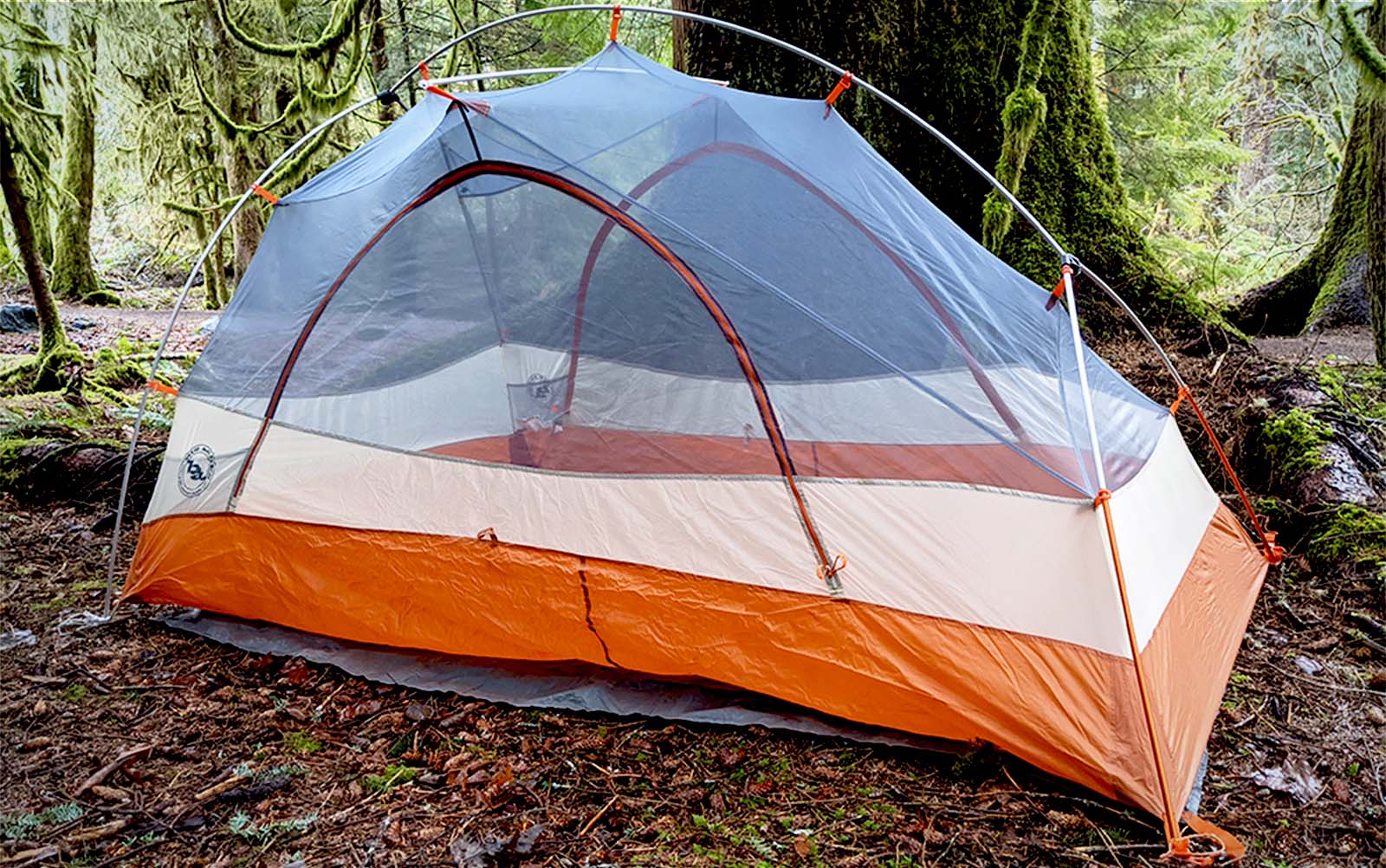
Like many lightweight tents, treating this one with some TLC will extend its lifespan over the long haul. I recommend taking along the 5 ounce accompanying ground sheet and choosing tent sites free of branches or burrs that could snag on the rainfly.
This has long been one of the top choices for couples heading out on longer backcountry adventures. Though some men have found that it’s a bit cozier than they’d like when a friend squeezes in. A longer version of this tent is coming out in 2022 that should make it easier to sleep facing opposite directions, as well as stash bags inside, if necessary.
Best 3-Person: Tarptent Cloudburst 3
Key Features
- Weight: 3 pounds, 5 ounces
- Floor Dimensions: 86 inches x 62 inches
- Peak Height: 40 inches
- Number of Poles: Two
- Single wall
- Not freestanding
Pros
- Simpler setup than most non-freestanding tents
- Fits three people easily, with extra gear going into the vestibules
- Maximum height extending down the spine of the tent means multiple people can sit up at once
- Optional third pole can be added for shoulder-season adventures
Cons
- More prone to condensation than double-wall tents
- Performs poorly in high winds without the third pole
- Large footprint can make it difficult to find a spot to set up
Despite its unusual profile, this tent is faster to set up than many double-wall freestanding tents. Once the two poles have been slung into their sleeves and attached to the grommets on either side of the door opening, all that’s left to do is thread the four stakes through the three loops that pull the door, roof, and bathtub floor taut, and stake them out to create tension across the tent. It took a few tries to get this right the first few times I set this tent up. But before long I could get it up with another person in under a minute (useful during a surprise rainstorm in the southern Oregon Cascades).
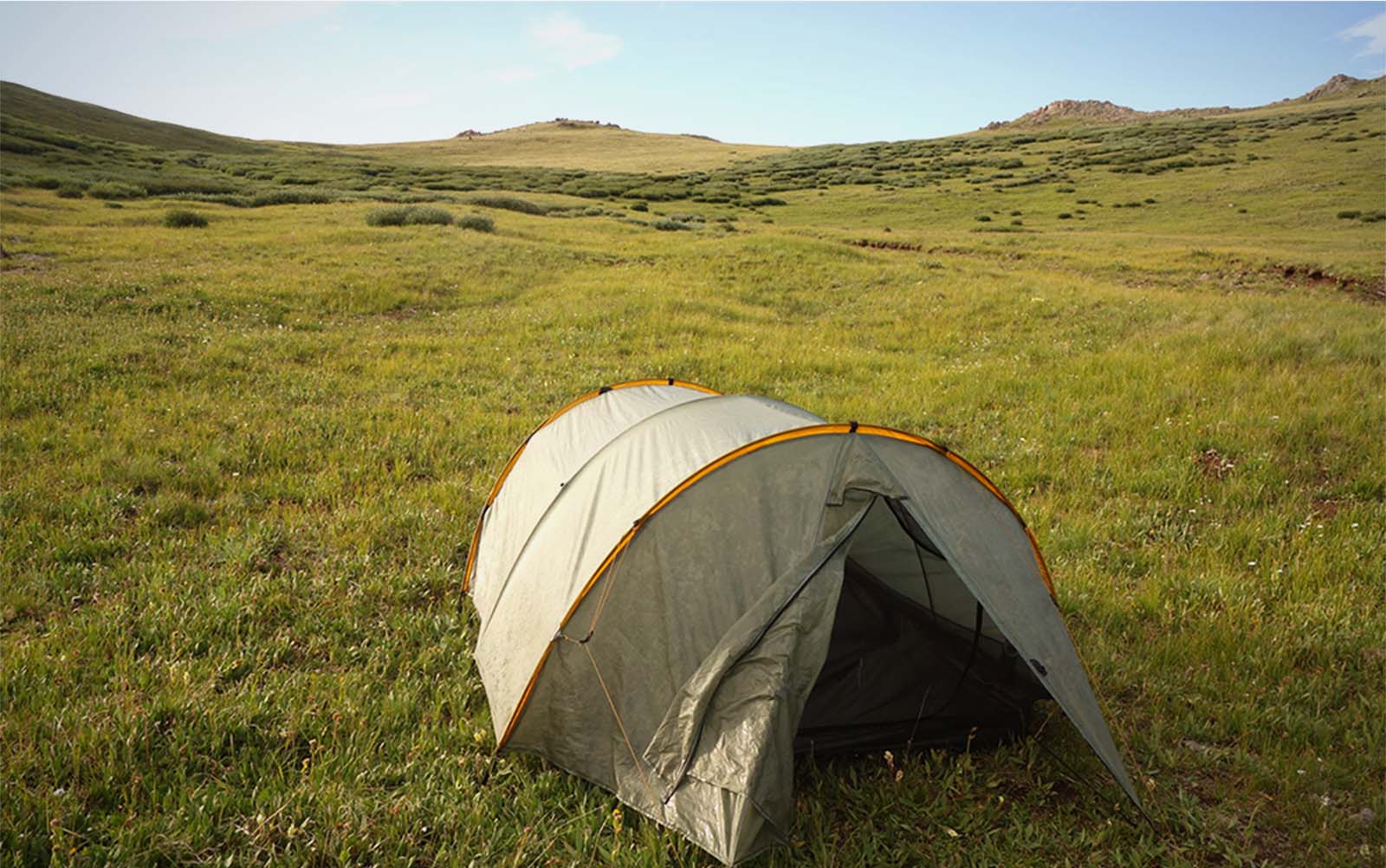
Unlike double-wall tents backpacking tents, the interior of the Cloudburst 3 stays dry during setup. Its substantial bathtub floor keeps you dry even when your tent site collects water underneath. My go-to is to skip the groundsheet with this tent. However, for rockier climes or treks off the beaten path, I’d recommend a groundsheet to increase its longevity.
It would be hard to find a tent with more usable interior space than the Cloudburst 3, which can be a gamechanger when you need to take a break from the elements for an hour (or a day). The dual-entry design makes it easy to duck out for bathroom break in the middle of the night without waking your backpacking partners.
Best for Winter: MSR Access
Key Features
- Materials: 20D ripstop nylon and Easton Syclone composite poles
- Floor Dimensions: 29 square feet (for a two-person tent)
- Includes eight stakes and four guylines
- Doors: One to two
- Vestibules: One to two
- Weight: 3 pounds, 10 ounces (for a two-person)
Pros
- Virtually no condensation
- Comparatively lightweight
- Great stuff sack
- Easy setup
Cons
- Expensive
- Somewhat delicate materials require care
The MSR Access was our pick for the best 4-season tents. It sets up easily with little fiddling to achieve a taut structure and had almost no condensation problems during testing. The lack of condensation is especially impressive given that nighttime temps dropped into the low twenties and the user had a hot water bottle stashed in the bottom of her sleeping bag. The temperature differential between the inside and the outside of this tent was substantial, yet moisture did not accumulate.
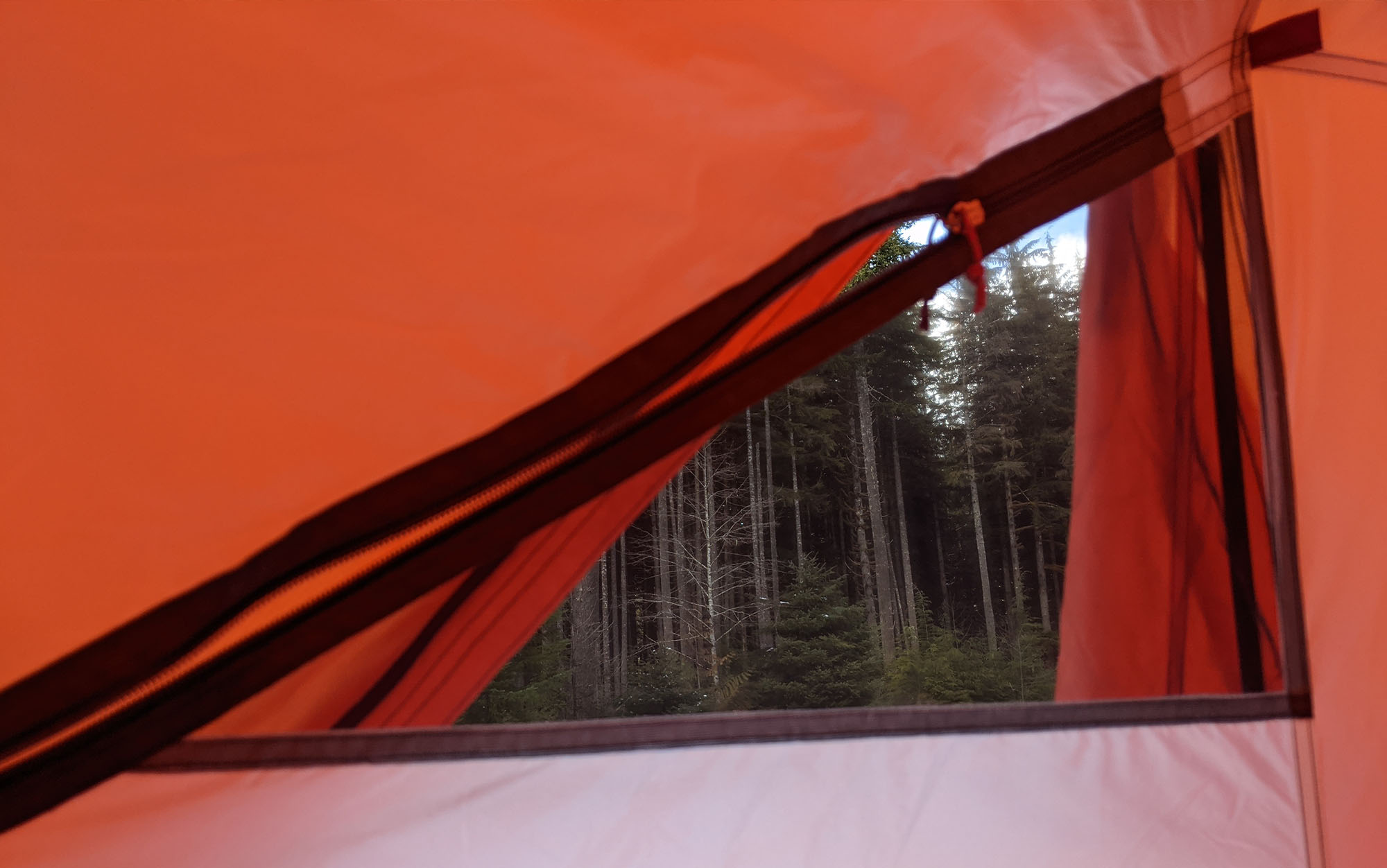
Unusually, the MSR Access achieves this exceptional ventilation with only one tiny window. The body of the tent itself—20D ripstop nylon—is breathable, helping the moisture generated inside your tent move to the exterior of the fabric. The rainfly’s design maximizes airflow by pushing moisture-laden air from inside the tent to the outside.
MSR’s Access was an impressively easy to assemble backpacking tent. On the testing trip, my friend set up her Access before I finished with the NEMO Kunai. And, as winter tents go, this one is fairly easy to get into bombproof shape. Take out the vestibule and give the cinch cords at the ends of the rain fly a few tugs, and you’re good to go. I also liked that the MSR Access has guyline cords pre-attached to the tent. Even if they aren’t strictly necessary to use on your average winter backpacking trip, it’s not something you want to fiddle with too much if conditions turn dicey.
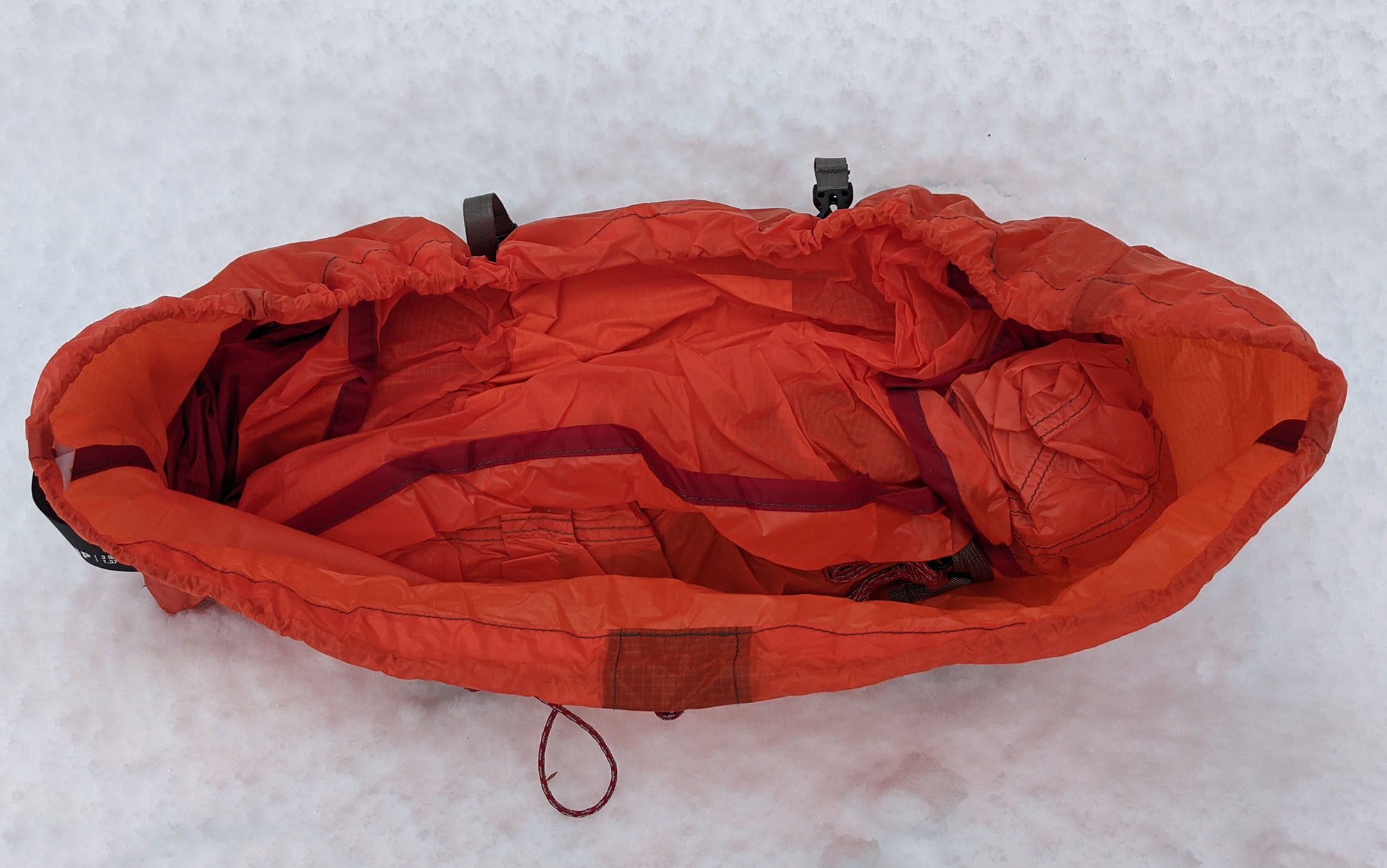
One small detail that made a big difference is the design of the MSR Access’s stuff sack. While most tent stuff sacks are longish cylinders with top openings, the MSR Access is a longish cylinder with a large wide side opening. This made packing away a wet tent a breeze. It also saved both my and my tester’s fingers from getting unnecessarily cold during the quick cleanup to leave camp.
Most Versatile: NEMO Kunai 3–4 Season Backpacking Tent
Key Features
- Weight: 3 pounds, 14 ounces
- Floor Dimensions: 82 inches x 50 inches with a tapered foot
- Peak Height: 44 inches tapered
- Number of Poles: Two
- Double wall
- Freestanding
Pros
- Taut, structurally sound design
- Double-wall design breathes well
- Lightweight for a four-season tent
Cons
- Tougher setup than a three-season tent
- A tight squeeze for two people
This tent performs at the outer edges of the three seasons while still being a solid option for summer adventures. The Kunai is the best tent for backpackers facing uncertain weather. This might not be a true four-season tent, but if your concern is being hit by a shoulder season snowstorm or high winds above treeline, the Nemo Kunai offers the most security of any pick on our list. And, unlike a true four-season tent, the mesh windows on the interior provide enough ventilation for use in average summer conditions.
Unlike other three-season tents, this tent was tough to set up during an early spring test trip to the Tenmile Range of Colorado. But in this case, that’s a feature, not a bug. While the basic setup is similar to other standard backpacking tents, tension in the Kunai’s poles make them a chore to secure in the grommets. However, this is exactly what makes this tent so taut and stiff when fully erected—ready to handle high winds or a sudden snowstorm.
Part of how this tent stayed lightweight while upping its performance is by using a thinner nylon, which can become an issue for the floor over time. I recommend purchasing the footprint if you plan to take this tent out on anything more substantial than fresh powder.
Best Budget: Kelty Discovery Trail
Key Features
- Weight: 4 pounds, 14 ounces (just under 5 pounds during testing)
- Materials: 68D polyester, aluminum poles
- Door: One
Pros
- Easy to set up
- Very affordable
- Lighter weight
Cons
- Did not pass the floor abrasion test
- Only one door
If you’re new to backpacking, it would be hard to go wrong with the Kelty Discovery Trail, OL’s pick for the best budget backpacking tent. It’s very affordable and is fairly lightweight given its spacious interior (two average-sized men would fit comfortably in this tent). It’s also a breeze to set up.
With most backpacking tents, you insert a pole into a metal grommet at one corner and then bend the pole until you can insert the other end into the grommet kitty corner. Inevitably you end up doing this a couple of times as the pole slips out of one or the other grommets. Instead of grommets, the Kelty Discovery Trail has nylon-webbing pouches at each corner. This prevents the poles from slipping out as you set up your tent. I also appreciated that the corners of the body of the tent were color-coded with the fly. This made it significantly easier to line up than it would have otherwise been.
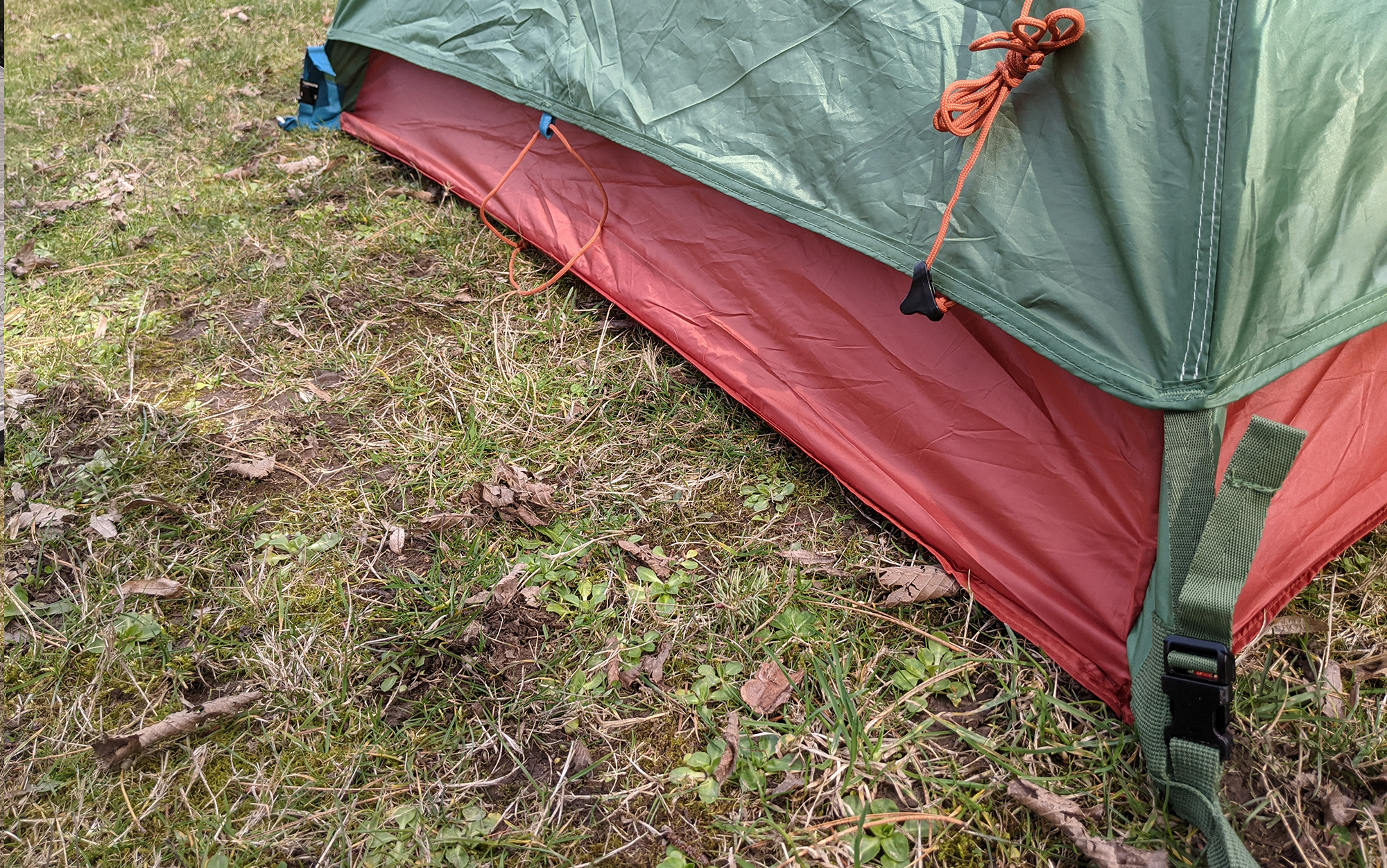
While the Kelty Discovery Trail 2 lacks the second door that you would expect with a two-person tent, it did have the rest of the full suite of features I would expect: roomy vestibule, guylines with extra stakes, vents along the rainfly, and pockets for storage in the interior. Consider purchasing the Kelty Discovery Trail footprint to accompany this tent, as it did pick up a couple of very small holes during the abrasion test. Finally, the Kelty Discovery Trail 2 weighed just under five pounds during testing.
Things to Consider Before Buying a Backpacking Tent
Purpose
Backpackers can expect to face a variety of conditions depending on the time of year and the part of the country they are exploring. Therefor knowing the extremes of your climate is essential to choosing a tent. The tents in this selection are primarily three-season tents, although the Nemo Kenai pick is appropriate for mild winter conditions, and we’d stick to the summer months with our budget pick. First-time tent buyers should know that four-season tents are generally built to hold heat in, and are not an appropriate choice if the primary season you plan to backpack in is summer.
Freestanding vs. Not Freestanding Backpacking Tents
The majority of backpacking tents on the market are freestanding. This means that once you snap poles into their grommets, you’ll have a reasonable approximation of what the final structure will look like. Freestanding tents are a great choice for first-time backpackers. There tends to be less guesswork during the initial set up. The advantage of non-freestanding tents is that they are typically lighter than their freestanding counterparts (some even do away with separate poles by incorporating trekking poles into the design), but they usually take some practice to get used to.
Single Wall vs. Double Wall Backpacking Tents
The three-person tent on our list is an example of a classic single-wall design. This means that the main body of the tent is waterproof, rather than a separate rainproof shell that attaches to the exterior side of the poles. Single-wall tents tend to work best for backpackers in climates with minimal bugs and a tendency for rain. The main advantage is that the interior of your tent will stay dry during setup (they are usually also a bit lighter in weight), but they tend to collect condensation more rapidly on the interior and run hotter at the height of summer. Double-wall tents, which have a mesh body with a waterproof layer thrown over top, tend to breathe better and work best for backpackers exploring climes with substantial mosquitoes or other bugs.
Weight
Car camping tents are bulky, with even the lightest models weighing upwards of five pounds per person. Backpacking tents are much lighter, typically weighing less than three pounds per person, with some ultralight (UL) models approaching one pound or less. There is usually a tradeoff with weight savings for durability and price with backpacking tents. Backpackers focused on short trips may prefer a heavier option while those that plan on high-mileage days would do better with a lightweight model.
Size
Over the years, many backpackers have found that a one-person tent is a tight squeeze for anyone over 5-foot, 10-inches—forget about squeezing in your pack and the rest of your gear. It’s not uncommon to see larger backpackers opt for two-person, or even three-person, tents to get enough leg room. The picks below have all been tested with a 6-foot-3-inch individual, and we’re confident that their length will accommodate most people.
FAQs
The cost of a backpacking tent is almost always tied to weight—the lighter a tent is, the more you can expect to shell out for it. Our budget pick is easily the cheapest option available—most single-person backpacking tents run between $150 and $400, while backpacking tents for three or more people can run upwards $1,000. I recommend aiming to spend around $300 for a one-person tent, $400 for a two-person tent, or $500 for a three-person tent.
The key differences between backpacking tents and campings tents are weight and volume. Most camping tents are too large to fit inside of a backpacking backpack (although you can sometimes strap them to the outside) and they tend to weigh upwards of 5 pounds per person. That being said, if your camping tent is under 5 pounds per person, and you can securely strap it to your pack, then this can be a reasonable way to find out if you like backpacking enough to invest in lighter gear specifically for the trail.
Read Next: The Best Family Tents
Backpacking tents typically weigh between 1 and 3 pounds per person, with some ultralight models (usually designated as such with the initials “UL”) weighing even less. Unless you are an experienced backpacker, I recommend staying away from tents with poles made from lightweight materials (such as carbon fiber), as these tend to be quite fragile. Dyneema is a popular lightweight fabric that is increasingly being used by tent manufacturers, but it comes with a substantial price bump (and tends to look, though not perform, worse for wear over time).
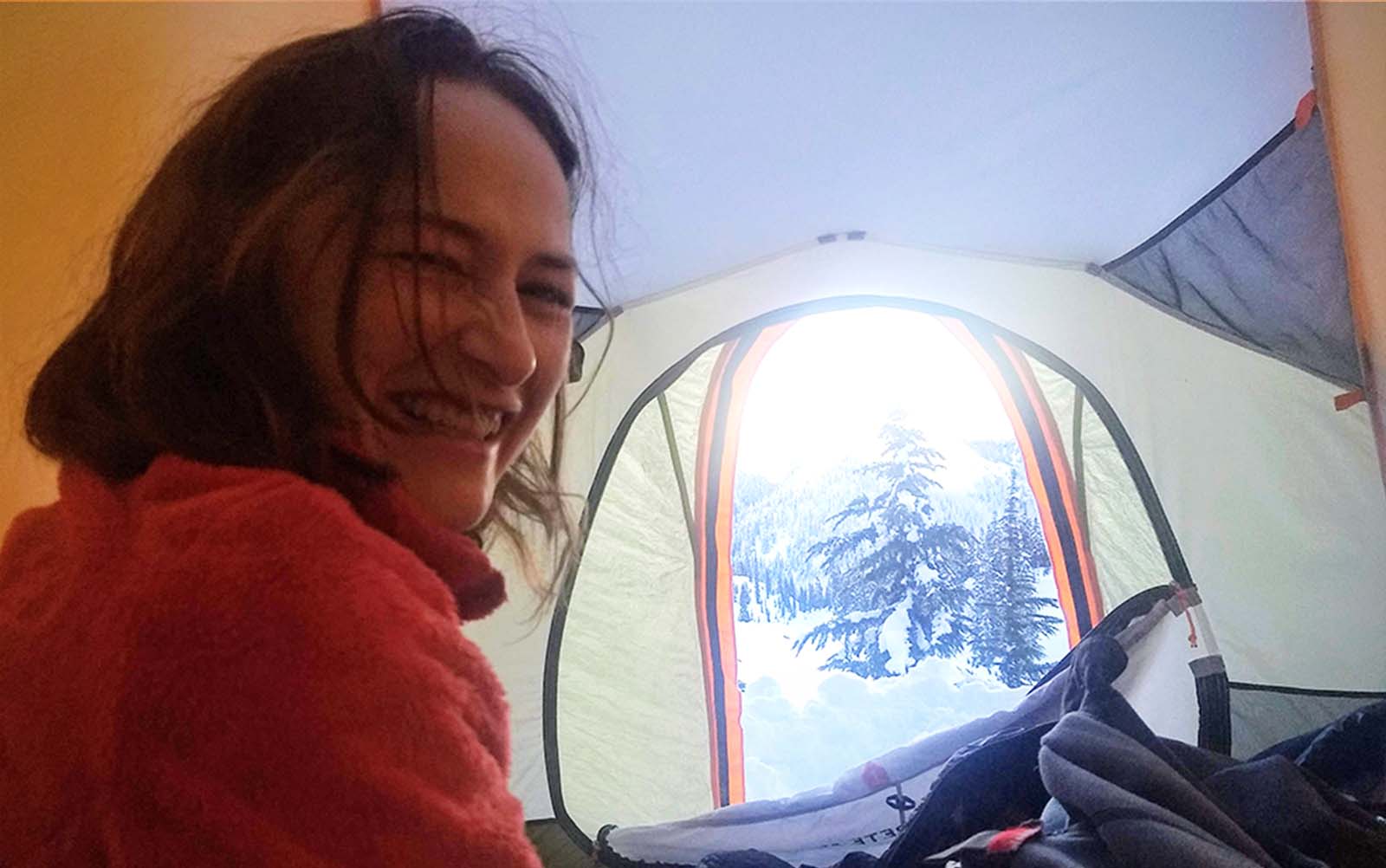
Why Trust Outdoor Life?
Since 1898, OL has been a leading authority in testing and reviewing hunting gear, fishing tackle, guns and shooting equipment, and much more. We have more than a century-long history of evaluating products, and we’re now bringing that expertise to online reviews. Our editors are experienced outdoorsmen and women, and most importantly, we’re trained journalists. We prioritize field testing and objective data when reviewing products. We conduct interviews with gear manufacturers and engineers as well as outdoor experts so that our readers have an understanding of how and why a product works—or doesn’t.
Advertising does not influence our gear reviews and it never will. While we always focus our coverage on standout products—because we want our readers to be aware of the latest and greatest gear—we also cover the flaws and quirks of any given product.
Final Thoughts on the Best Backpacking Tents
There are great backpacking tents on the market today for every budget and backpacking style. The introduction of ultralight tents onto the market has led to a revolution in both weight-savings and engineering. But first-time backpackers should shop cautiously, as many of the lightest tents on the market require special handling and have a shorter lifespan. Choose the best backpacking tent for the adventures that you are planning, rather than what is the latest and greatest.
- Best 2-Person: Big Agnes Copper Spur HV UL2
- Best 3-Person: Tarptent Cloudburst 3
- Best for Winter: MSR Access 2
- Most Versatile: NEMO Kunai 3–4 Season Backpacking Tent
- Best Budget: Kelty Discovery Trail
Read Next: Best Backpacking Stoves
